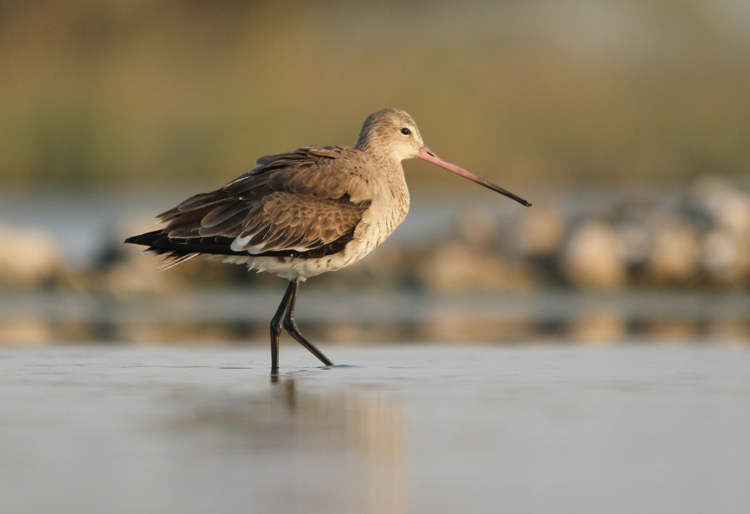A five-month-old bar-tailed godwit recently smashed the record for long-distance migration after flying 13,560 kilometers non-stop over a period of 11 days.
Every autumn, millions of migratory birds take to the sky for a long and perilous journey to escape the coming cold, feed and breed for the next few months. Many of them cover impressive distances of over 10,000 kilometers (6,200 miles), but this year, one small bird surpassed all expectations regarding long-distance flying, traveling a whopping 13,560 kilometers (8,425 miles) without stopping, and setting a new Guinness record in the process. And it was all because of an unusual detour that could have cost the bird its life, considering that the non-stop journey pushed its flight capacity to the limit.

Photo: Dhaval Vargiya/Unsplash
Last month, the young bar-tailed godwit – a wetland bird species – took off from Alaska on its way to New Zealand for the winter, but somehow, at one point during its grueling journey, the small bird took a little detour that added an extra 500 kilometers to its initial itinerary. That seems like a small distance to cover, considering that the normal route would have seen it fly around 13,000 kilometers, but it’s actually a significant difference that could have had fatal consequences.
“Short-tailed shearwaters and mutton birds can land on the water and feed,” Eric Woehler of Birdlife Tasmania told ABC News. “If a godwit lands on water, it’s dead. It doesn’t have the webbing in its feet, it has no way of getting off the water. So if it falls into the water from exhaustion, if bad weather forces it onto the ocean surface, that’s it.”
Scientists were able to track the godwit’s record flight with the help of a tiny tracker that only weighed 5 grams. Technological advancements have allowed researchers to track such small species of birds without endangering them, as adding any kind of significant weight to a creature that weighs only between 300 and 400 grams could put its life in danger.
“It’s one thing to put a satellite tag on an albatross that weights five or more kilos but it’s a completely different story in terms of technology and ethics to put a tracker on a bird that weighs only 300 or 400 grams,” Dr. Woehler said.
Recorded data showed that the five-month-old bar-tailed godwit took off on October 13 from the wetlands of the Yukon Kuskokwim Delta in Alaska, followed the regular route across the Pacific Ocean down to New Caledonia and through the Tasman Sea, before making an unexpected 90-degree turn that saw it head towards Tasmania rather than New Zealand.
Dr. Woehler estimates that the bird lost “half or more of its body weight,” during the 11-day continuous flight, but it made it to dry land safely, setting a new Guinness record for long-distance bird flight. The previous record had been set in 2020 by another bar-tailed godwit that had covered 12,000 km (7,500 miles) in 11 days.
Interestingly, scientists have yet to understand how birds like the bar-tailed godwit are able to navigate such large distances without stopping and without getting lost.






